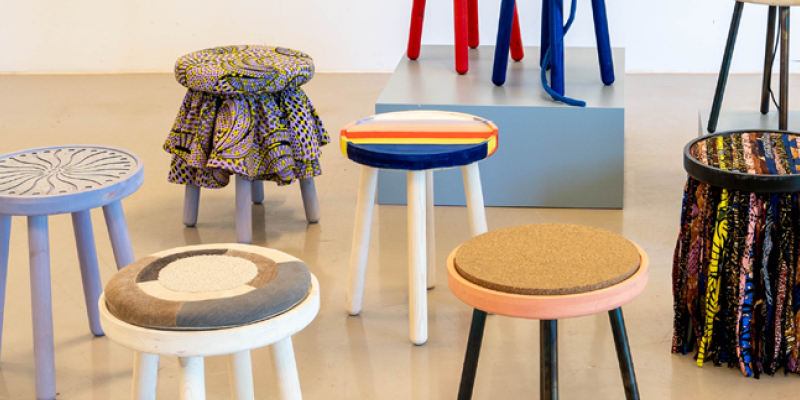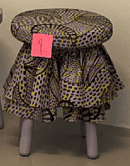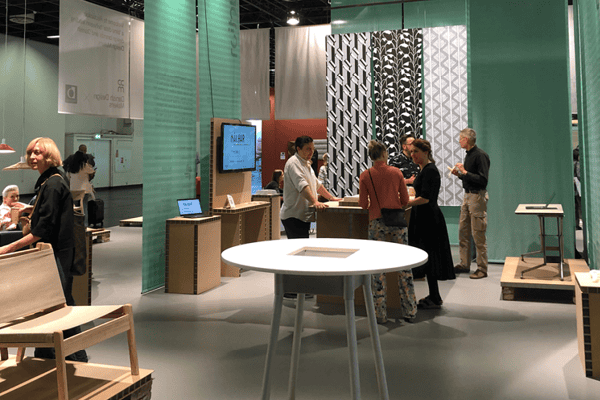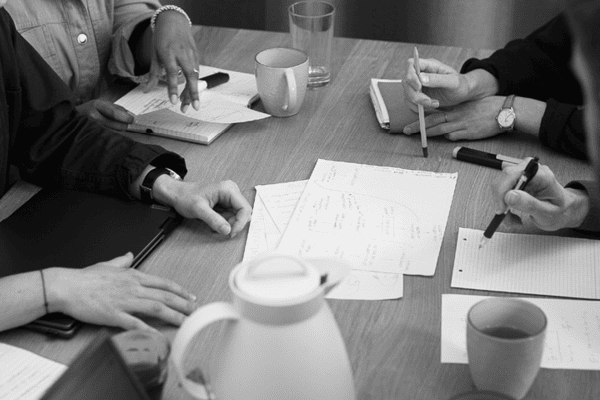
Lately, Målbar has been focusing on the benefits of reuse compared to recycling. But what are the differences really and what are the effects of doing one or the other?
But there is more to it than this. There are also differences between reused materials and reused products. And to what degree an item is to be processed before it’s no longer reused but should be referred to as recycling. And also who uses it influences which term to use. And what does upcycling refer to?
Reused and upcycled products
Reused products refer to used stuff, like clothes, toys, and electronics that are resold or given to new owners and in that way continue their use phase without changing shape. This also applies if the clothes are mended, if the electronics are repaired or if the toys get new batteries.
Upcycling means to creatively reuse something for a different purpose than it was originally intended for and reuse it for a more valuable purpose than it is able to fulfil in its existing state. For example, if a pair of worn-out shoes or tires are used to grow flowers in. Or if damaged sails are used to make water resistant and durable backpacks instead of being thrown out.
Reused and recycled materials
Reused materials are also called New Waste and consist of for example production waste in the form of cut off materials. If this left over material is used for other products within the same company that generates the leftovers, according to EU’s definition, it cannot be referred to as neither reuse nor recycling but “only” as optimal usage of resources. Which definitely is a good thing, maybe even better than if the so-called new waste were to be transported far away to another company.
If production waste from one company is used in its existing form by another company to produce new products, it can be referred to as reuse of materials. But as soon as it’s broken down or in other ways loses its shape, it is called recycling. Now that’s settled.
Another form and degree of recycling is when used materials as for example plastic bottles are collected, cleaned, remelted into granules and used again for new plastic products. This specific process is quite effective and recycled PET is almost as clean and high quality as the virgin PET. But for many other materials, the recycling processes are less effective. And the recycled material often needs to be mixed with virgin material to maintain its durability and quality. Hence it would be better – viewed from a climate perspective and given that the emissins from transport do not exceed the benefits – to reuse products as they are for the same purpose they were originally made for. However, this also calls for a definition of downcycling of materials, because some companies want to use the recycled plastic from PET-bottles as fillers in other materials to make them “greener”. Sorry to say, but this way, it loses a lot of its value. This is because mixing it with other materials makes it less recyclable. Furthermore, a material that could make new drinking bottles, which are under high quality and health requirements, should not be downgraded to just a filler material.
So, to answer our initiating question: what difference does it make whether we do one thing or the other?
Well, let’s see an example. As part of a larger cooperation initiated by The Circular Furniture Network between Målbar, The Upcycl and 6 design companies, 13 very creative stools were created from the same basic stool made of reused pinewood. Almost all the additional materials that were added to the designs were also reused. Målbar calculated on all the stools in the reused versions and in virgin versions to see the difference in climate impact between virgin a reused materials.
We’ll use the one called ‘A fashionable and voluminous hat and skirt design’ as example. It is upholstered with felt and African textile, which carry the main part of the product ’s climate emissions. The version with textile cover made from reused textiles has an estimated climate impact of 24 kg of CO2eq while the virgin version has an estimated climate impact of 36 kg of CO2eq. If we change the textiles from being virgin to being 100% recycled textiles, the climate impact only goes down to 34 kilos of CO2eq.
’s climate emissions. The version with textile cover made from reused textiles has an estimated climate impact of 24 kg of CO2eq while the virgin version has an estimated climate impact of 36 kg of CO2eq. If we change the textiles from being virgin to being 100% recycled textiles, the climate impact only goes down to 34 kilos of CO2eq.
So there you go! In general, the manufacturing of recycled materials requires more energy than reusing waste materials in their current shape. Therefore, recycled products most often exceed reused products in climate impact.
For more information on the project What a waste
In sum, there is a fine line between the definition of reuse and recycling of materials, and if you are in doubt about whether your product is made from one or the other, it’s probably best to call it recycled.


